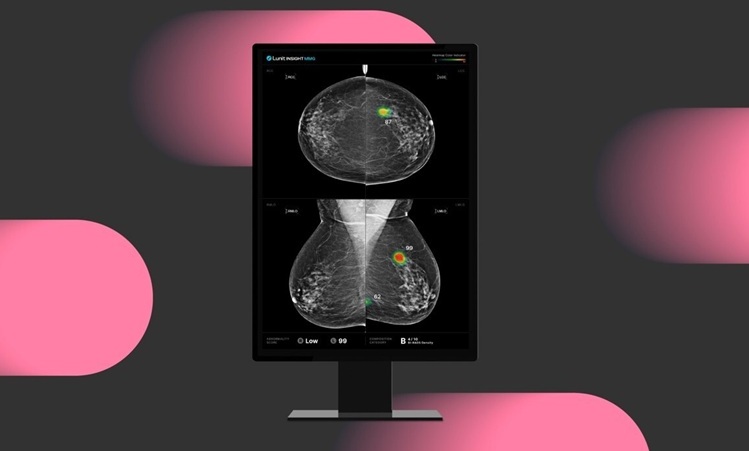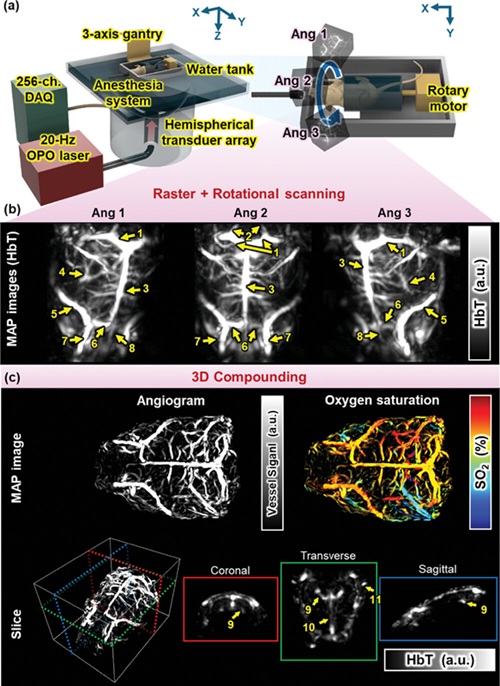High Resolution Ultrasound Speeds Up Prostate Cancer Diagnosis
|
By MedImaging International staff writers Posted on 26 Mar 2025 |

Each year, approximately one million prostate cancer biopsies are conducted across Europe, with similar numbers in the USA and around 100,000 in Canada. Most of these biopsies are performed using MRI images combined with conventional ultrasound, allowing urologists to directly target potential tumors for more accurate diagnoses. However, the process of MRI-guided biopsy involves two steps: first, an MRI scan, followed by an ultrasound-guided biopsy. This procedure requires multiple hospital visits and specialist radiological expertise to interpret the MRI images and align them with the ultrasound. Now, an international clinical trial has demonstrated that biopsies guided by high-resolution ultrasound are just as effective as those using MRI for diagnosing prostate cancer.
Known as micro-ultrasound, this technology is less expensive and easier to use compared to MRI. It could greatly accelerate diagnosis, reduce the need for multiple hospital visits, and free up MRI resources for other purposes, as per the findings of the trial led by researchers at the University of Toronto (Toronto, ON, Canada). Micro-ultrasound operates at a higher frequency than traditional ultrasound, providing three times the resolution, which captures detail comparable to MRI scans for targeted biopsies. Urologists and oncologists can quickly learn to use the technique and interpret the images, especially if they are already experienced with conventional ultrasound. Micro-ultrasound is not only cheaper to acquire and operate than MRI, but it could also allow imaging and biopsies to be completed in a single appointment, even in non-hospital settings.
The OPTIMUM trial is the first randomized study to compare micro-ultrasound (microUS)-guided biopsy with MRI-guided biopsy for prostate cancer detection. The trial involved 677 men who underwent biopsies at 19 hospitals across Canada, the USA, and Europe. Half of the participants had MRI-guided biopsies, a third received both microUS-guided biopsy followed by MRI-guided biopsy, and the remaining patients only had the microUS-guided biopsy. The results of the OPTIMUM trial were presented at the European Association of Urology Congress in Madrid and published in JAMA. The microUS technique was found to be as effective as MRI-guided biopsy, with nearly identical detection rates across all three groups. Even in the group that received both types of biopsies, microUS identified the majority of significant cancers. According to the researchers, the results of the OPTIMUM trial could have a similar transformative impact as the initial introduction of MRI technology.
“When MRI first emerged and you could image prostate cancer accurately for the first time to do targeted biopsies, that was a gamechanger. But MRI isn’t perfect. It’s expensive. It can be challenging to get access to it quickly. It requires a lot of experience to interpret properly. And it uses gadolinium which has some toxicity. Not all patients can have MRI, if they have replacement hips or pacemakers for example,” said Laurence Klotz, Professor of Surgery at the University of Toronto’s Temerty Faculty of Medicine and the Sunnybrook Chair of Prostate Cancer Research. “But we now know that microUS can give as good a diagnostic accuracy as MRI and that is also game changing. It means you can offer a one stop shop, where patients are scanned, then biopsied immediately if required. There’s no toxicity. There are no exclusions. It’s much cheaper and more accessible. And it frees up MRIs for hips and knees and all the other things they’re needed for.”
Related Links:
University of Toronto
Latest Ultrasound News
- Tiny Magnetic Robot Takes 3D Scans from Deep Within Body
- World's First Wireless, Handheld, Whole-Body Ultrasound with Single PZT Transducer Makes Imaging More Accessible
- Artificial Intelligence Detects Undiagnosed Liver Disease from Echocardiograms
- Ultrasound Imaging Non-Invasively Tracks Tumor Response to Radiation and Immunotherapy
- AI Improves Detection of Congenital Heart Defects on Routine Prenatal Ultrasounds
- AI Diagnoses Lung Diseases from Ultrasound Videos with 96.57% Accuracy
- New Contrast Agent for Ultrasound Imaging Ensures Affordable and Safer Medical Diagnostics
- Ultrasound-Directed Microbubbles Boost Immune Response Against Tumors
- POC Ultrasound Enhances Early Pregnancy Care and Cuts Emergency Visits
- AI-Based Models Outperform Human Experts at Identifying Ovarian Cancer in Ultrasound Images
- Automated Breast Ultrasound Provides Alternative to Mammography in Low-Resource Settings
- Transparent Ultrasound Transducer for Photoacoustic and Ultrasound Endoscopy to Improve Diagnostic Accuracy
- Wearable Ultrasound Patch Enables Continuous Blood Pressure Monitoring
- AI Image-Recognition Program Reads Echocardiograms Faster, Cuts Results Wait Time
- Ultrasound Device Non-Invasively Improves Blood Circulation in Lower Limbs
- Wearable Ultrasound Device Provides Long-Term, Wireless Muscle Monitoring

Channels
Radiography
view channel
Higher Chest X-Ray Usage Catches Lung Cancer Earlier and Improves Survival
Lung cancer continues to be the leading cause of cancer-related deaths worldwide. While advanced technologies like CT scanners play a crucial role in detecting lung cancer, more accessible and affordable... Read more
AI-Powered Mammograms Predict Cardiovascular Risk
The U.S. Centers for Disease Control and Prevention recommends that women in middle age and older undergo a mammogram, which is an X-ray of the breast, every one or two years to screen for breast cancer.... Read moreMRI
view channel
Ultra-Powerful MRI Scans Enable Life-Changing Surgery in Treatment-Resistant Epileptic Patients
Approximately 360,000 individuals in the UK suffer from focal epilepsy, a condition in which seizures spread from one part of the brain. Around a third of these patients experience persistent seizures... Read more
AI-Powered MRI Technology Improves Parkinson’s Diagnoses
Current research shows that the accuracy of diagnosing Parkinson’s disease typically ranges from 55% to 78% within the first five years of assessment. This is partly due to the similarities shared by Parkinson’s... Read more
Biparametric MRI Combined with AI Enhances Detection of Clinically Significant Prostate Cancer
Artificial intelligence (AI) technologies are transforming the way medical images are analyzed, offering unprecedented capabilities in quantitatively extracting features that go beyond traditional visual... Read more
First-Of-Its-Kind AI-Driven Brain Imaging Platform to Better Guide Stroke Treatment Options
Each year, approximately 800,000 people in the U.S. experience strokes, with marginalized and minoritized groups being disproportionately affected. Strokes vary in terms of size and location within the... Read moreNuclear Medicine
view channel
Novel PET Imaging Approach Offers Never-Before-Seen View of Neuroinflammation
COX-2, an enzyme that plays a key role in brain inflammation, can be significantly upregulated by inflammatory stimuli and neuroexcitation. Researchers suggest that COX-2 density in the brain could serve... Read more
Novel Radiotracer Identifies Biomarker for Triple-Negative Breast Cancer
Triple-negative breast cancer (TNBC), which represents 15-20% of all breast cancer cases, is one of the most aggressive subtypes, with a five-year survival rate of about 40%. Due to its significant heterogeneity... Read moreGeneral/Advanced Imaging
view channel
AI Model Significantly Enhances Low-Dose CT Capabilities
Lung cancer remains one of the most challenging diseases, making early diagnosis vital for effective treatment. Fortunately, advancements in artificial intelligence (AI) are revolutionizing lung cancer... Read more
Ultra-Low Dose CT Aids Pneumonia Diagnosis in Immunocompromised Patients
Lung infections can be life-threatening for patients with weakened immune systems, making timely diagnosis crucial. While CT scans are considered the gold standard for detecting pneumonia, repeated scans... Read moreImaging IT
view channel
New Google Cloud Medical Imaging Suite Makes Imaging Healthcare Data More Accessible
Medical imaging is a critical tool used to diagnose patients, and there are billions of medical images scanned globally each year. Imaging data accounts for about 90% of all healthcare data1 and, until... Read more
Global AI in Medical Diagnostics Market to Be Driven by Demand for Image Recognition in Radiology
The global artificial intelligence (AI) in medical diagnostics market is expanding with early disease detection being one of its key applications and image recognition becoming a compelling consumer proposition... Read moreIndustry News
view channel
GE HealthCare and NVIDIA Collaboration to Reimagine Diagnostic Imaging
GE HealthCare (Chicago, IL, USA) has entered into a collaboration with NVIDIA (Santa Clara, CA, USA), expanding the existing relationship between the two companies to focus on pioneering innovation in... Read more
Patient-Specific 3D-Printed Phantoms Transform CT Imaging
New research has highlighted how anatomically precise, patient-specific 3D-printed phantoms are proving to be scalable, cost-effective, and efficient tools in the development of new CT scan algorithms... Read more
Siemens and Sectra Collaborate on Enhancing Radiology Workflows
Siemens Healthineers (Forchheim, Germany) and Sectra (Linköping, Sweden) have entered into a collaboration aimed at enhancing radiologists' diagnostic capabilities and, in turn, improving patient care... Read more


















